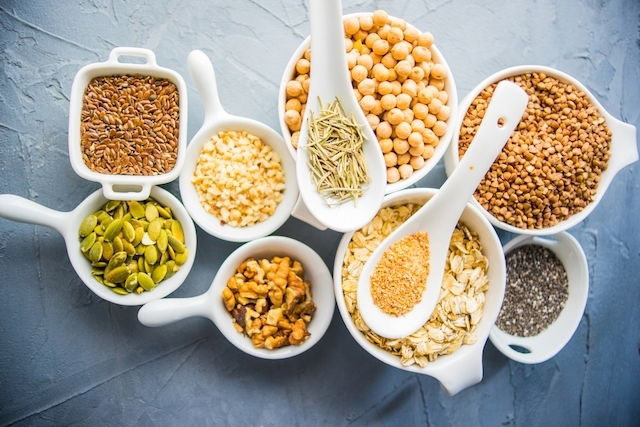The low triglyceride diet is based in decreasing carbohydrate intake and opting instead for whole grains and high-fiber vegetables and fruits. It also includes consuming healthy fats such as oily fish, nuts, seeds and olive oil.
In addition, you should avoid eating processed foods that are rich in sugar, as well as recipes made with refined flours, like cake.
Triglycerides are formed when excess calories are consumed and the body stores them in the fat cells, the adipocytes. When they are no longer able to produce energy, triglycerides accumulate in the blood and increase the risk of cardiovascular disease. To reduce your risk, you should see your doctor for a cardiovascular assessment.

What to eat
The foods that should be prioritized in a low triglyceride diet include:
- Oily fish, such as tuna, salmon and sardines;
- Lean meats and lower-fat proteins, such as some cuts of beef, chicken without skin and fat, turkey, eggs and tofu;
- Healthy oils such as linseed, sunflower and olive oil;
- Nuts, such as peanuts, cashews, almonds and walnuts;
- Seeds, such as linseed, chia and sunflower;
- Wholegrain cereals, such as brown rice, wheat bran, whole wheat pasta, whole wheat bread, quinoa and oats;
- Legumes, chickpeas, lentils, beans and peas;
- Fruits and vegetables, including the peel and pulp, such as oranges, peaches, apples, lettuce, chard, spinach, rocket, broccoli, cabbage and carrots;
- Natural juices and infusions, such as water, coconut water, natural fruit juices and teas with antioxidant properties, such as cinnamon or turmeric, for example.
These foods are rich in healthy fats, such as omega-3 and other polyunsaturated fats, as well as fiber and antioxidant substances that help control cholesterol and lower triglycerides, preventing heart problems, strokes and thrombosis.
It's also important to exercise at least three times a week, which not only helps to reduce body weight, but also improves general health and promotes an increase in good cholesterol, which is directly related to triglyceride levels.
Low triglyceride meal plan
The following table shows an example of a 3-day menu to control triglycerides:
Alcoholic drinks such as beer, wine or champagne are also not recommended, as they tend to be high in carbohydrates and promote fat accumulation in the body. Regular and excessive alcohol consumption is related to with an increase in triglyceride levels.
Food to avoid
Foods that should be avoided to lower triglycerides are:
- High fat meats, such as fatty cuts of beef, sausages, such as ham, chorizo, sausage, salami, mortadella and bacon;
- High-fat dairy products, such as cow's milk, full-fat yogurt, butter, cream and yellow and hard cheeses, such as cheddar cheese and parmesan.
- Foods rich in sugar, such as ice cream, cakes and desserts;
- Artificial juices and soft drinks
- Processed foods, such as fries, hamburgers, pizzas and frozen foods or ready-made sauces;
- White flours, such as white wheat flour, white bread, biscuits, pasta or white rice.
Furthermore, alcoholic drinks, such as beer, wine or champagne are also not recommended, as in addition to containing alcohol, they are rich in carbohydrates and promote fat accumulation in the body.
Read more about natural ways to lower cholesterol that you can also implement.
